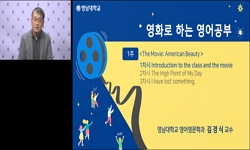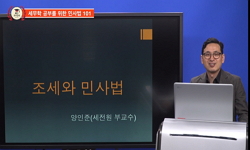葛庵 李玄逸(l627~1704)은 l7세기 영남학파의 최고 학자로서, 栗谷學을 비판하고 退溪學을 변증하며 嶺南 士林의 宗匠 역할을 한 사람이다. 그가 남긴 文集은 이러한 사상사적 지위에 걸맞게 양...
http://chineseinput.net/에서 pinyin(병음)방식으로 중국어를 변환할 수 있습니다.
변환된 중국어를 복사하여 사용하시면 됩니다.
- 中文 을 입력하시려면 zhongwen을 입력하시고 space를누르시면됩니다.
- 北京 을 입력하시려면 beijing을 입력하시고 space를 누르시면 됩니다.
https://www.riss.kr/link?id=A82604428
- 저자
- 발행기관
- 학술지명
- 권호사항
-
발행연도
2011
-
작성언어
-
-
주제어
갈암(葛庵)(이현일(李玄逸)) ; 경 ; 敬 ; 공부 ; 工夫 ; 령남학파 ; 嶺南學派 ; 퇴계학파 ; 退溪學派 ; Galam(Lee Hyeon-Il) ; Gyeong ; Study ; Yeongnam School ; Toegye School
-
KDC
151.05
-
등재정보
구)KCI등재(통합)
-
자료형태
학술저널
-
수록면
241-240(0쪽)
- 제공처
- 소장기관
-
0
상세조회 -
0
다운로드
부가정보
국문 초록 (Abstract)
葛庵 李玄逸(l627~1704)은 l7세기 영남학파의 최고 학자로서, 栗谷學을 비판하고 退溪學을 변증하며 嶺南 士林의 宗匠 역할을 한 사람이다. 그가 남긴 文集은 이러한 사상사적 지위에 걸맞게 양적으로 풍부하고 질적으로도 수준 높은 성리이론을 포함하고 있다. 그런데 종래 그의 철학사상에 대한 연구는 거의 理氣四七論에 한정되고, 수양론에 대해서는 거의 찾아볼 수 없다. 이것은 배움과 실천을 함께 강조하는 유학의 전통으로 보나, 退溪學의 주요한 특징 중 하나가 ‘敬``의 수양론이며 갈암이 그러한 퇴계학의 嫡傳者임을 자부한다는 점에서 쉽게 이해하기 힘들다. 이 논문은 바로 이러한 문제의식에서 출발하여 갈암의 敬論에 대해 집중적으로 고찰하였다. 시대적 배경과 개인적 학문경향 등으로 인해 敬에 대한 갈암의 언급이 많지 않지만, 배경 지식의 풍부함과 논리적 치밀함이 돋보인다. 갈암은 朱子-退溪의 전통 성리학적 敬論을 계승하며, 특히 그의 家學의 연원인 敬堂 張興孝의 영향을 크게 받았다. 그는 천하사물의 이치가 둘로 구분되지만 이 둘을 分對的인 관계로만 보아서는 안 된다고 생각하였다. 그래서 敬의 공부 또한 靜時와 動時, 未發과 已發, 存養과 省察, 居敬과 涵養(窮理) 등으로 구분할 수 있지만, 대립되는 양자는 상호보완적 整合體를 이룬다고 보았다. 이러한 맥락에서 갈암은 대립을 이루는 모든 공부의 통일근거로 敬을 해석하였으며, 마음 공부의 핵심이 敬에 달려 있다고 강조한다.
다국어 초록 (Multilingual Abstract)
Galam(葛庵) Lee Hyeon-Il(李玄逸) could be considered one of leading scholars among Yongnam School in 17th century. During his time. Lee Hyeon-Il criticized Yulgok scholarship and defended Toegye scholarship, acting as a vigorous representative of...
Galam(葛庵) Lee Hyeon-Il(李玄逸) could be considered one of leading scholars among Yongnam School in 17th century. During his time. Lee Hyeon-Il criticized Yulgok scholarship and defended Toegye scholarship, acting as a vigorous representative of Yongnam School. As a corollary. Lee Hyeon-Il left a legacy of many works in Confucianism with stellar academic quality. It should, however, be noted that most of previous study and research concerning Lee Hyeon-Il`s Confucius philosophy by and large have been confined to the realm of theory of Ri-Gi(理氣), and little has touched upon Lee Hyeon-Il`s theory of moral culture. This is the point in which one wouldfind a kind of contradiction from the tradition of Confucianism and Neo-Confucianism that emphasize unity of theory and practice. Taking this critical concern as its starting point, this study investigates Calam`s theory of Gyeong(敬). Due to both historical circumstances and individual preference, unfortunately, few works are available in order to closely look at Galam`s theory of Gyeong. However, it has been revealed that his knowledge background and embedded logic in his theory should be considered as excellent ones. Furthermore, Galam inherited theory of Gyeong from traditional Neo-Confucianism such as Chu Hsi(朱熹) and Toegye(退溪). He argued that reason of all things can be dichotomized yet this split should be complementary to each other. "Not only does Gyeong hold the key to unify all opposed studies into one coherent study but, more importantly, it is the crux of all mind studies," as Lee Hyeon-Il contended.
동일학술지(권/호) 다른 논문
-
- 경북대학교 퇴계학연구소
- 이동희
- 2011
- 구)KCI등재(통합)
-
한교사가(漢郊祀歌)<련시일(練時日)> 장(章) 고석(考釋)
- 경북대학교 퇴계학연구소
- 은선배 ( Seon Bae Eun )
- 2011
- 구)KCI등재(통합)
-
- 경북대학교 퇴계학연구소
- 김옥성 ( Ok Sung Kim )
- 2011
- 구)KCI등재(통합)
-
- 경북대학교 퇴계학연구소
- 김경수 ( Kyeong Soo Kim )
- 2011
- 구)KCI등재(통합)




 KISS
KISS







